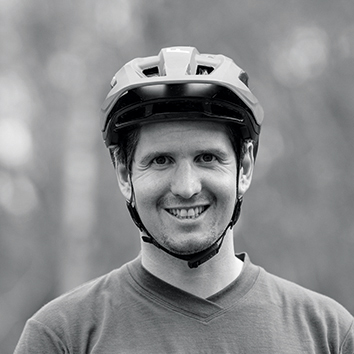While the country is in partial lockdown to halt the spread of coronavirus COVID-19, we’re still allowed to head out once a day for some exercise, so many of us are going out on our bikes. A quick spin along low-consequence trails may not be the kind of fun-fuelled thrash that us mountain bikers are accustomed to, but it does provide a valuable opportunity to improve your riding. Check out these top tips for making the most of your daily exercise ride.
(NOTE: All photos accompanying this article were taken before the coronavirus lockdown was put in place.)
- Learn a new skill: Wheelie, Manual, Trackstand, Bunnyhop
- Refine your technique: Vision, Flat corners, Braking
- Set an obstacle course
- Add some extra exercise: Intensity, Off-the-bike training
- Master trailside repairs
Learn a new skill
Every year many of us say we want to learn something new, be it improving a trick, finally working out how to manual or upping our fitness. Most years this doesn't happen. If you're going out for daily exercise rides, why not try to fit in a few minutes of dedicated practise to a skill that'll help you on the trails? Here are a few that we'll be working on when heading out for a spin:
Wheelie
Wheelies aren’t just fun for kids and pros, they’re fun for everyone. Plus, they can help improve balance, co-ordination, pedalling and brake control. On the trail, having the ability to pick your front wheel up and over or onto a feature can be really useful.
(Guide: www.bikeradar.com/advice/skills/learn-how-to-wheelie-with-anna-glowinski)
Manual
The big brother of the wheelie, and still one of the coolest tricks out there. Being able to pop your front wheel in the air just by using your body weight is a real flow improver. It can help you maintain speed over holes, bumps, roots, and is the first movement in learning to bunnyhop too. You don’t need any special equipment for this one, just some time, practise and the knowledge of what to do. Get some top manualling tips from pro street rider Tom Cardy on BikeRadar.
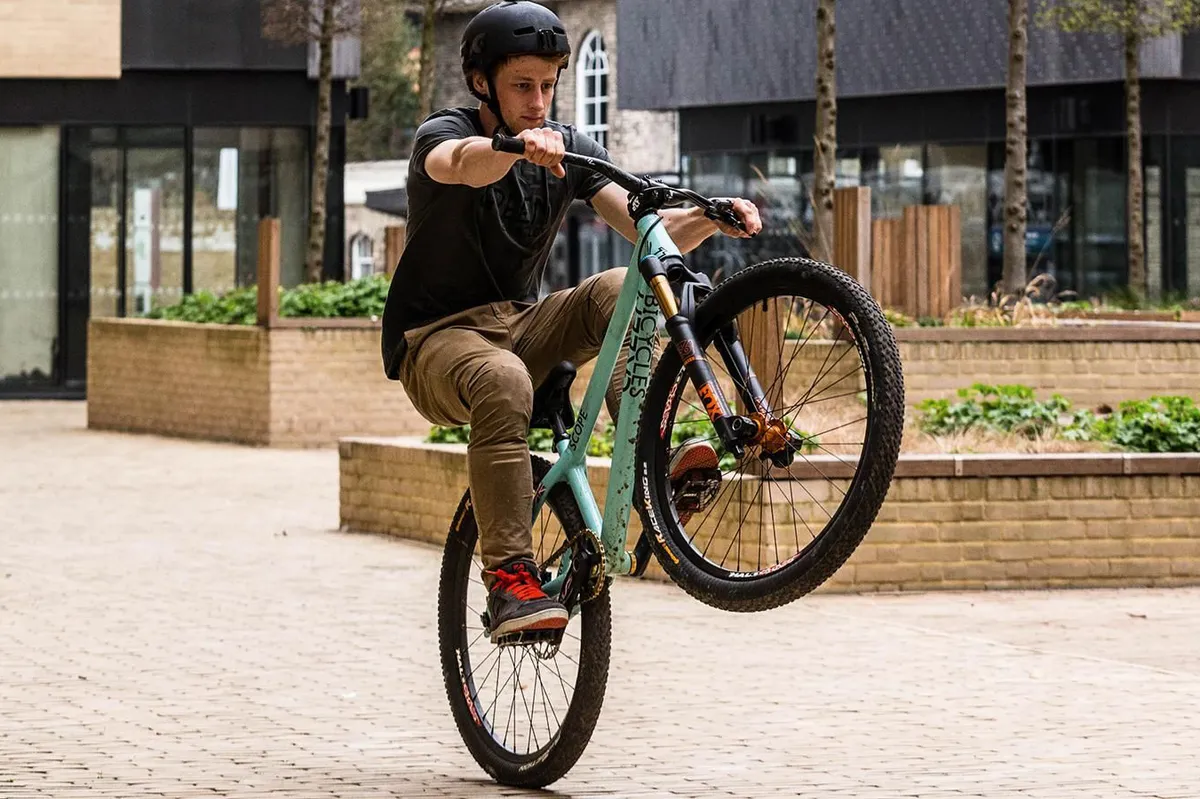
Trackstand
Learning to balance on your bike while stationary without putting your feet down not only makes you look cool at the traffic lights, it can also help you out on the trails – for example, if you need to let other trail users past, inspect features before dropping in or just clip into your pedals. It'll also improve your slow-speed balance. Once you’ve mastered this skill, you’ll wish you'd learned it earlier.
(Guide: www.bikeradar.com/advice/fitness-and-training/learn-how-to-trackstand-in-4-easy-steps)
Bunnyhop
The bunnyhop is one of the most useful skills to have on the trail. It can allow you to clear debris, holes, roots and rocks, and is even great for helping you to jump. Being able to bunnyhop means you can ride with more flow, because there's less slowing down or stopping when you encounter unexpected or awkward obstacles. It can take a while to learn, so don’t give up if you don’t see a quick progression, but once you’ve got the basics dialled, it can really improve your riding.
(Guide: www.bikeradar.com/features/how-to-bunny-hop-in-5-simple-steps)
Refine your technique
Riding with good technique increases control, which in turn improves confidence and fun on the bike. Fortunately, riding fast isn’t the best way to enhance your fundamental technique – it’s often better to take a step back and slow down to a comfortable pace so that you can concentrate on the skill you’re aiming to improve. So, now is a great time to get out there and try to crack any flaws that have been holding you back. Here are the most common things we see on the trails that riders could improve:
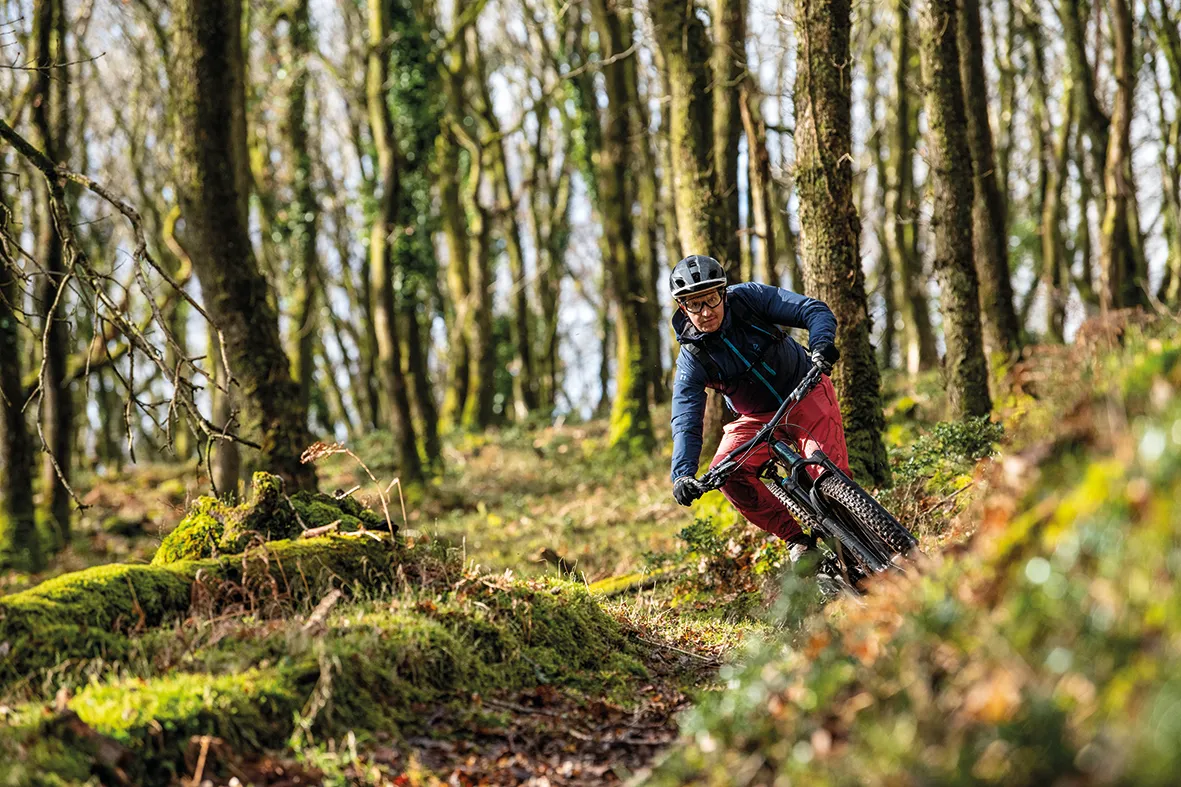
Vision
– Looking just ahead of your front wheel is a surefire way to end up in trouble. It’s relatively easy to maintain a view further down the trail when it’s smooth and flowing, but as soon as an obstacle pops up, it’s easy to focus on it, rather than continuing to look past it. Looking at the exit of a corner or rock garden, or over that root spread, will give you the best chance of keeping in balance, staying committed to a smooth line and remaining aware of what’s coming up. When out for your exercise ride, practise keeping your eyes up. Pick out a short section of trail and try actively focusing on different places as you ride it to see how that affects things. Check out this article on BikeRadar for more in-depth information on how vision works and how to use it to your advantage when riding.
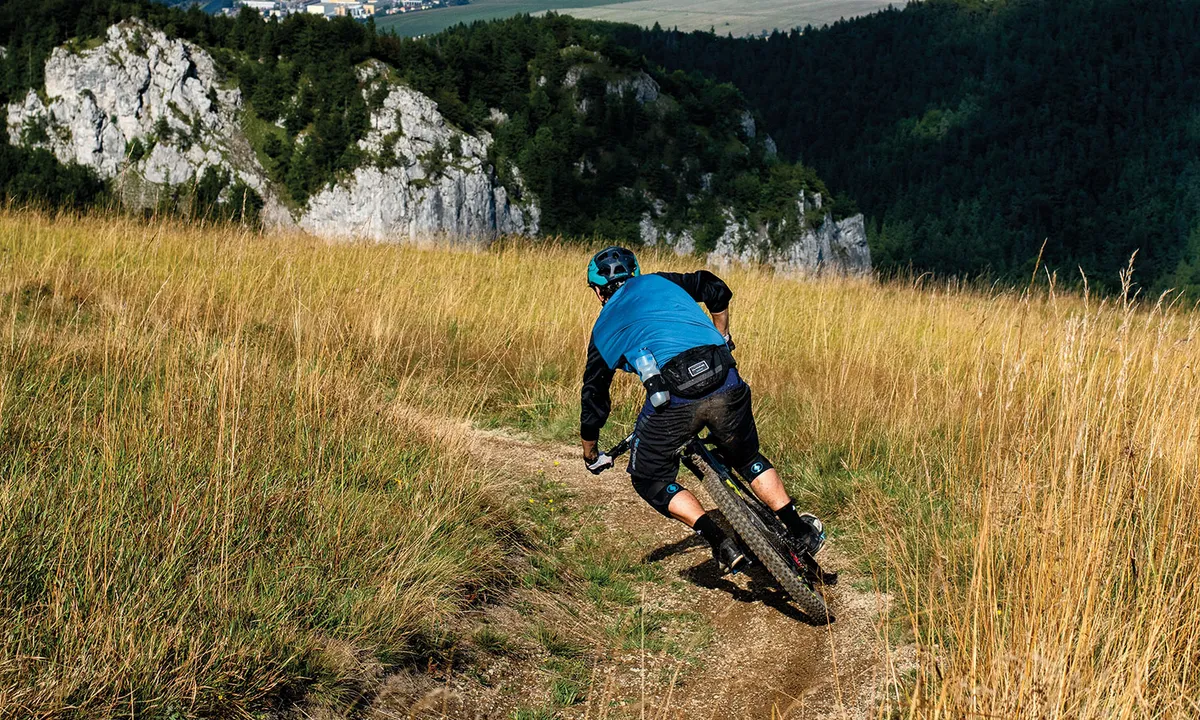
Flat corners
– These tend to be the type of turns that cause people the most issues. They have little or no support, meaning grip is minimal, so it requires solid technique to ride around them with flow and control. This is all about brake control, body position and being able to move the bike around underneath you. Here are the basics to help you tackle them:
- Get your braking done early. This is true for pretty much all corners, but offers even more significant benefits in flat turns. You want to maximise grip and your ability to lean the bike over, both of which are hindered when the brakes are on.
- Lean the bike over, using your arms while keeping your body upright. This is easier if you drop the outside pedal to use as your platform to stand on. You can point your inside knee into the turn to give the bike room to lean to the side.
- Use your body to help steer and find grip. Looking through the turn with your head and hips will guide the bike around the corner.
- Keep your eyes looking around the corner at the exit. This will help you keep your balance and stay on-line.
An excellent place to practise these turns is on a wide fireroad or open field track. You can even link a few together to help improve flow.
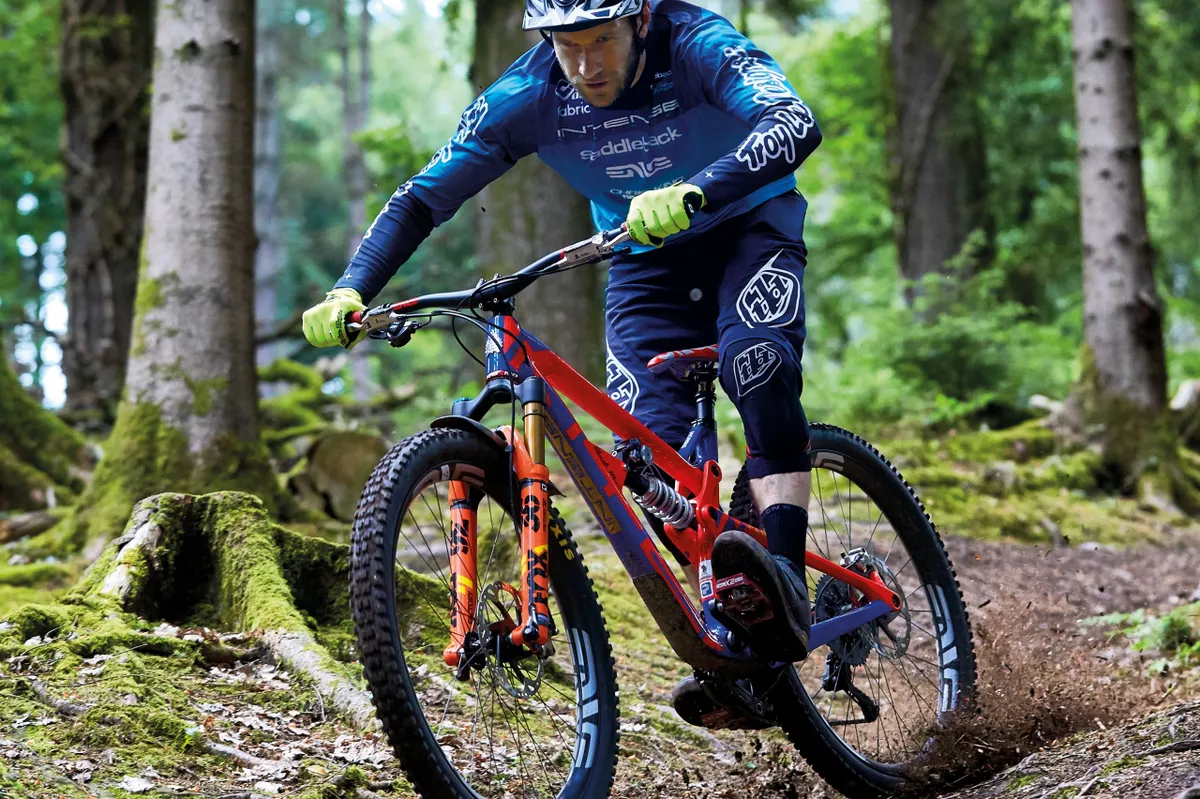
Braking
– It’s a skill unto itself, but getting your braking done before an obstacle or corner, and in a way that maintains traction is a vital component of good riding technique. It’s too easy to come rushing into a section flat-out having fun, only to blow out a turn and exit into the next section without any speed. That puts a quick stop to the fun you were having, and you’re much more likely to lose control.
- Where to brake – there’s no one simple answer to this, but as a rule, it’s best to brake early before a turn when your bike is in a straight line. That will give you the maximum grip and manoeuvrability through the corner. It takes practice, so it is a useful skill to improve when you can’t hit the trails hard.
- Pulling on the brakes harder means more braking force, but it’s not always useful to have the maximum braking force all the time. Steep descents or stopping quickly might require it, but otherwise, it’s good to learn how to modulate your braking, so you use just enough to get the job done without locking wheels.
- Which brake is best to use? It all depends on the terrain and grip levels. It’s never great to use too much of one brake and not enough of the other. Skidding either wheel can cause you to lose control. Think about it this way. The front brake stops you; the rear brake slows you. Try not to make the front tyre brake and change direction at the same time though. If you need to lose lots of speed, use both. If you want to control your speed gently, the back brake can often be enough on its own.
Set an obstacle course
A great way to improve your skills while keeping the speed down is to challenge yourself with an obstacle course or a little trials section. Logs, sticks, rocks – anything can be used as markers to set up your course. Going as slowly as possible without stopping and riding tight hairpins or figures of eight are all helpful balancing drills, as is picking up items from the floor as you ride past. You can make it as creative as your imagination (and skill) will allow. Who knows, you might just be the next Danny MacAskill!
Add some extra exercise
If really want to maximise the fitness benefits of your lockdown rides, you need to vary the intensity to target different energy systems and add in some off-the-bike exercises too.
Intensity
Try to switch up the intensity at which you ride to add some variation to your rides and target different energy systems. One day could be a steady-state ride, the next you could vary between hard efforts and recovery phases, and others can be a mixture of both. Hills are often natural intervals, so while you can’t hammer the downs, have a go at hitting it hard on the ups.
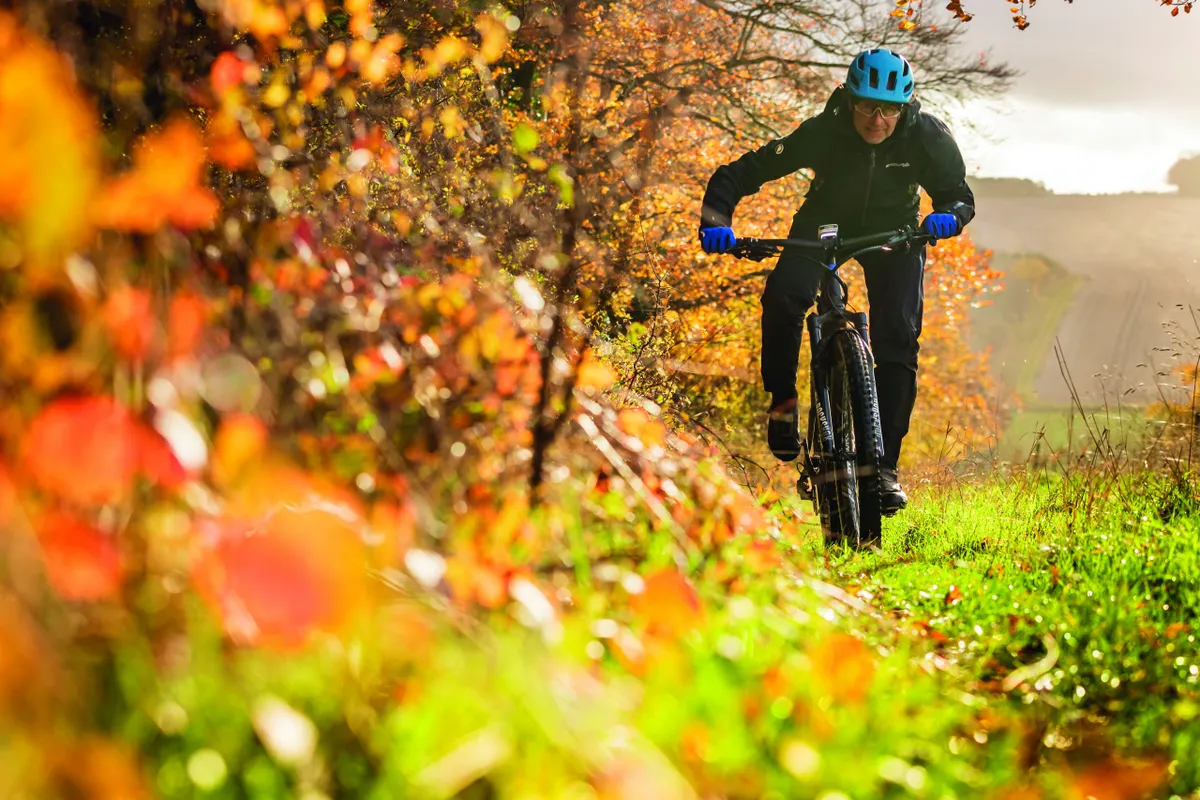
Off-the-bike training
Just because you’re riding, it doesn’t mean you can’t hop off your bike to give yourself a full-body workout. You can even set up your ride to become a circuit-training loop. Pick a few exercises you don’t need any equipment for (push-ups, squats, lunges, crunches, planks, star jumps, etc). Ride a certain distance and then pause and perform an exercise before jumping back on and continuing on your way, repeating until you’ve completed your goal. This will help train other muscles not used when riding and keep the body from becoming too familiar with one form of exercise.
Master trailside repairs
No one wants to be that guy/girl who gets a puncture, snapped chain or other problem and can’t fix it at the trailside, or doesn't have the correct kit to do so. Now's the perfect time to learn how to get a tyre off quickly or use that never-touched chain tool. Doing this without people looking on and waiting for you is much less stressful than if you're holding up a whole group.
It's a good idea to learn how to do the repairs at home first, but replicating it out on the trails will show up any shortcomings with your equipment and technique. Jobs that are easy with access to a full toolbox can become a lot harder when all you have is a multi-tool! Getting good with your kit and learning your bike's quirks (they all have them) will make for much quicker trailside repairs when you really need them. You can find loads of tips at www.bikeradar.com/advice/workshop.

For the latest on mountain biking during the coronavirus lockdown – including how to get your favourite magazine via hassle-free home delivery – click here.
